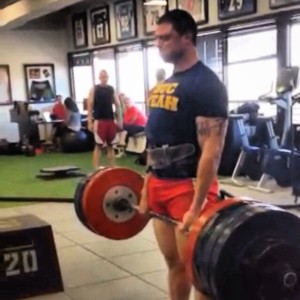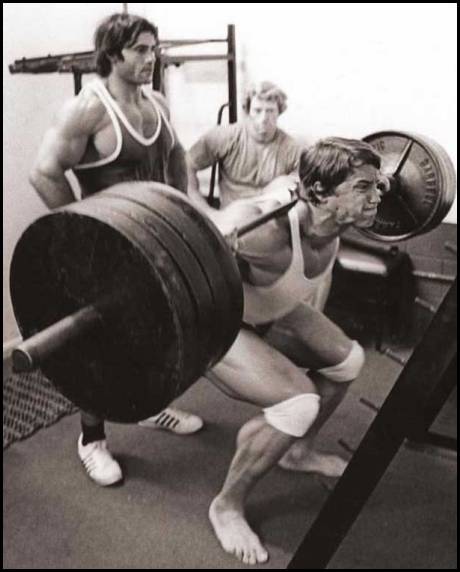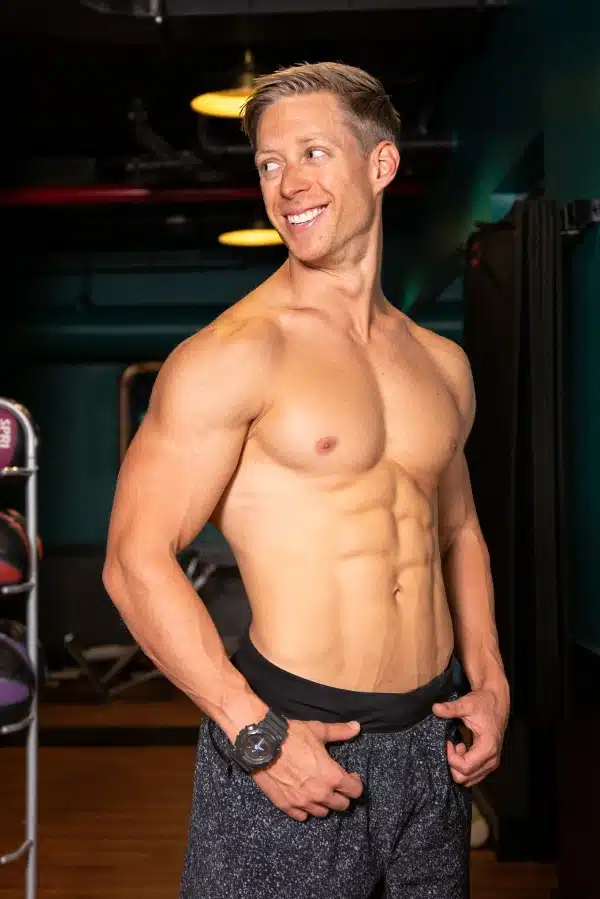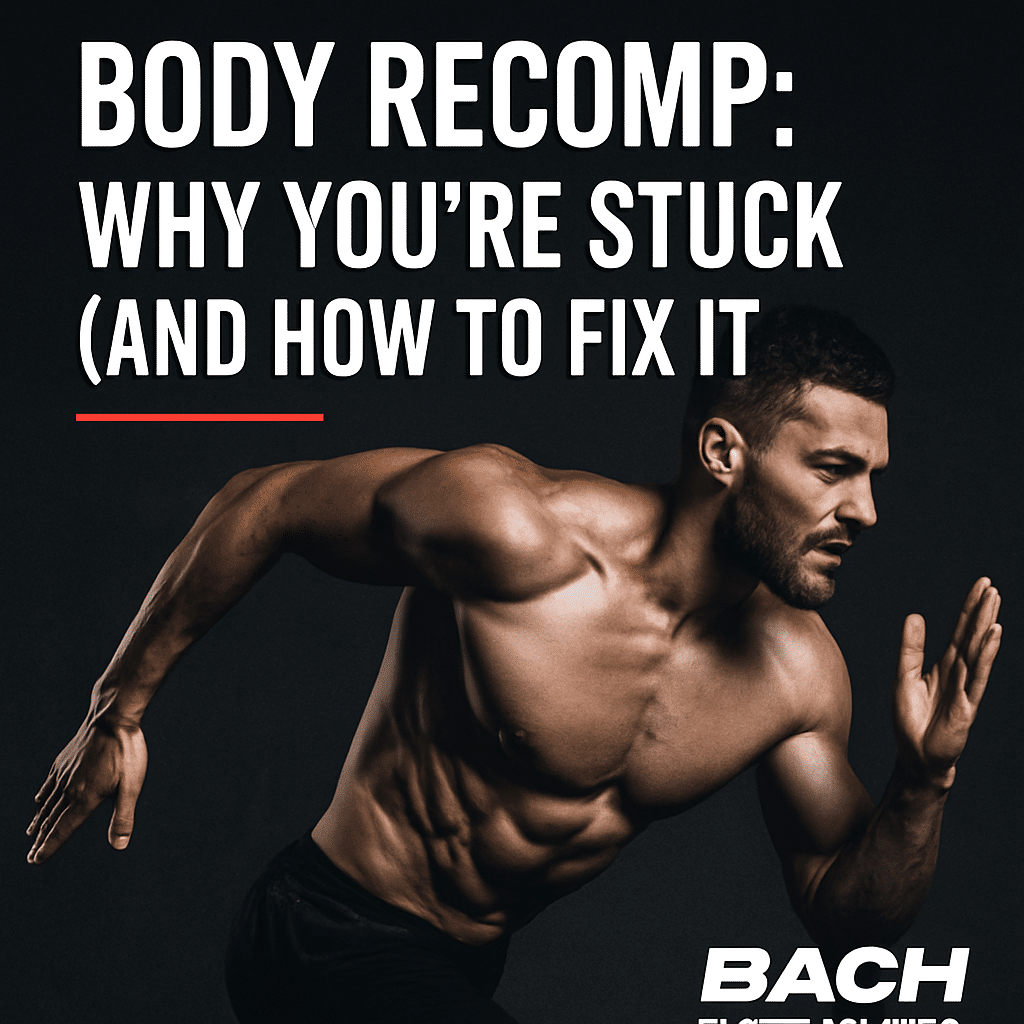Rest Your Way to Gains
August 11, 2015
It should be enough to make you scream. You’re trashing your gains in the gym and you don’t even know it.
How?
Behind sets, reps, weight, and peaking at elliptical bunnies…exercise rest periods rank in the basement of your concerns when throwing weight around the gym.
Big mistake.
You’re severely handicapping your training by neglecting an important training variable: the exercise rest periods. Luckily, these exercise rest period guidelines will have you resting your way to gains in no time:
- Additional exercises can’t make the workouts longer. Your goals should be focused on the task at hand and becoming more efficient with training.
- Don’t screw up the primary exercises. Your focus should be on the “big-bang” lifts and exercises. They’re the reason for most of your training based results.
- Don’t haphazardly throw shit into the mix. Everything must have a rhyme and a reason. Every activity is a tool. Every activity must have purpose.
- Don’t follow the same exercise rest period ad-naseum. As your loading parameters and volume change, so will the rest period and potential active recovery exercise.
- You know your body. If you’re still torched after two minutes take another minute. You know your body better than a timed rest-interval.
The amount of time and rest between exercises have huge implications to your training adaptations. The amount of time between sets will determine:
- Restoration of short-term energy substrates like creatine-phosphate
- Central nervous system recovery for maximal power output and technical proficiency
- Clearing metabolites from muscular contractions (good or bad, depending on your goal)
- Variations in heart rate. Recovery is essential for certain training goals, while you could keep heart rate high for maximal fat burning you should fully recover for speed work
The Duration of the Exercise Rest Periods Depends on Your Goal
Your training must be goal specific. You won’t run 73 miles between max-effort deadlifts and get as big as Paul Bunyan. Conversely, if you rest 10 minutes between sets to eat stuffed crust pizza you, won’t get completely shredded. All aspects of training, rest periods included, must be specific to your goals to achieve the desired outcomes.
Exercise Rest Periods for Strength Development
For maximal strength, the rest periods needs to be long enough for the nervous system to recover for future high-intensity bouts. Anything less than what’s needed and you’re leaving weight on the bar and limiting maximal strength gains.
Most workouts use ascending loading, a method of increasing load as the body warms up. This warm up “potentiates” your body, ramping up your nervous system and increasing strength through the exercise.
Be careful though. If exercise rest periods are too short neural and muscular fatigue will counter potentiation. You’ll miss lift and ingrain poor technique. In most cases, rest periods of three to five minutes’ between heavy strength sets (85%+ 1-Rm) suffice. Shorter rest periods impair physical performance during subsequent sets (Rahimi et al) and, over several weeks, attenuate strength increases compared to long rest periods(Spiering et al).
Non-Competing Strength Super-sets: While I mentioned three to five minutes between sets for strength exercises less time can be used when opposing muscle groups are trained. Granted, three to five minutes is still used between sets of the same exercise.
Example:
1a.Chin Up 4×6 Rest 90 seconds
1b. Military Press 4×6Rest 90 seconds.
These things are the shiznit. Your workouts are more efficient, stimulate a hypertrophic response, and still get strong as hell.
Exercise Rest Periods for Athletic Performance
Strength/Speed/ Power Performance: Exercise rest periods are more important for athletes with high levels of performance in speed and power sports. Adrian Peterson needs more rest than you do after squatting a house if you’re only puttin’ up 185. His neurological outputs are much more demanding. In addition, training methods used with athletes like sprints, speed development work, Plyos, Olympic lifts, and heavy compound lifts are more neurologically demanding and sensitive to technical changes than most other training. As activities get less neuerolicially demanding shorten the rest periods as it fits your goals.
Note: You don’t need to rest 2 minutes after biceps curls !
This is why exercise order is so important, as covered in the Ultimate Beginners Guide to Weight Training: “Proper exercise order is vital for exercise performance and safety. Due to requirements of the nervous system and muscles proper exercise order must be followed. Contrary to many workouts running 400-meter sprints followed by 15 power cleans at 75% 1-RM and 50 box jumps is stupid and dangerous. That’s recipe for overtraining and spewing blood from your split shins, not high performance gains.”
Furthermore, the NSCA Essentials of Strength and Conditioning states “Compound power and core exercises require the highest level of skill and concentration of all exercises and are most affected by fatigue. Athletes who become fatigued are prone to using poor technique and consequently are at a higher risk of injury(Baechle and Earle 390-391). “Sounds pretty damn important to me.
Eric’s Recommendation: I recommend the following order for exercises:
1. Dynamic movements: Jumps, sprints, throws
2.Explosive/Power: Power cleans, snatches
3.Compound Strength: Squats, deadlifts, presses, pulls
4.Compound/higher rep/hypertrophy: Squats, deadlifts, presses, and pulls
5. Isolation work: Curls, calf raises, leg extensions
6. Conditioning
Post Activation Potentiation: Post-Activation potentiation is an advanced training method that supercharges your power output. Commonly abbreviated as “PAP, ” this physiological adaptation describes the immediate enhancement of muscle force during explosive movements after a heavy resistance exercise (Robbins 2005). For this to work, an athlete performs a high-intensity strength training exercise followed by an explosive exercise that mimics the biomechanics of the strength training exercise. After the heavy, potentiating exercise neural drive increases, allowing for greater power output in the ballistic exercise. The complex pair is repeated for a number of sets, which over time, improves neuromuscular efficiency and the muscles ability to generate force.
There is no uniform agreement about the optimal recovery required between the pre-load stimulus and subsequent muscle performance to gain optimal performance benefits (Macintosh et. al). I’ve found rest periods from 1-3 minutes between exercises to work best. This exercise rest period allows for PAP training stimuli while promoting a higher workout density and sufficient training volume, both important variables. PAP is not for every-day clients or athletes; rather, it’s a very stressful training method that must be used with careful consideration.
Exercise Rest Periods for Muscle Growth
I’m a huge proponent of emphasizing strength for muscle growth, but that doesn’t mean longer exercise rest periods are ALWAYS the answer. If you’ve had a skin-searing pump after multiple sets with short rest you’ve had first-hand experience with metabolic stress—a vital component for exercise-related muscular hypertrophy.
According to Brad Schoenfeld, the accumulation of metabolites is the result of short rest and long-tension exercises that require the use of anaerobic glycolysis, resulting in the buildup of lactate, hydrogen ions, creatine, and other metabolites. The damage caused by this build-up requires greater subsequent muscular repair to support you getting jacked. So yes, if you’re looking to get jacked out of your gourd then getting a nauseating pump is a necessary component of training.
Training for muscle growth requires a well-rounded approach that emphasizes heavy weights/low reps (1-6), moderate weight with moderate reps (8-12), and the occasional higher rep sets (15+). Hit the various rep ranges to maximize stimulation of all muscle fibers with 2-5 minutes, 45-90 seconds, and 0-30 seconds fitting the various rep ranges, respectively.
Exercise Rest Periods to Shred Fat
When training to shred fat I always make one thing clear: aim to maintain strength. Staying strong with heavy lifting in a caloric deficit maintains anabolic hormone levels, strength, and holds onto lean muscle mass. That said, as soon as strength is trained, either in each session or a planned weekly session, intensity and incomplete recovery maximizes training density. With the exception of heavy and neurologically demanding exercises, keep rest periods below 60 seconds, as long as safe technique is maintained.
Intensity reigns king for fat loss; if you’re able to hold a normal conversation you need shut eppp’ and get to work. Supersets, tri-sets, and giant sets work great when all exercises focus on a different movement pattern.
| Mvmt. Pattern | Exercise | Sets/Reps | Rest Period |
| Squat | Goblet Squat | 4×8 | Rest= 0-15sec. |
| Horizontal Pull | DB 1-arm Row | 4×10/arm | Rest= 0-15sec. |
| Horizontal Push | Chain Push-Up | 4×12 | Rest= 0-15sec. |
| Lunge | Step Back Lunge | 4×10/leg | Rest=90 seconds |
These exercises are performed in succession in a giant set with minimal rest in-between. Then, rest a moderate time after completion of the final exercise in the set. Workouts for fat loss need to be damn tough, oxygen debt from incomplete recovery should have you heaving and hawing like the dying horse in True Grit.
Exercise Rest Period Considerations
Hormones are effected based on exercise rest periods: Short exercise rest periods are recommended for muscular hypertrophy exercise protocols because they augment a greater GH response compared to long rest periods (Rahimi et al). So, while longer rest periods are vital for nervous system recovery, execution of technical exercises, and maximal rates of force development the shorter rest periods (30-60 seconds) are better for burning fat and muscle building.
Exercise rest periods must match the Nervous system and Mechanical requirements of the exercise. Multi-joint free weight exercises like cleans and squats have greater nervous system and mechanical requirements than a triceps extension or biceps curl. Do you really need the same amount of rest?
Hell no!
Look at the muscles involved in a clean versus a biceps curl: quads, glutes, hamstrings, calves, traps, rectus abdominus, erector spinae versus the biceps, brachialis, and brachioradialis. The power clean has greater muscular and neural requirements to execute the exercise properly, increasing the need for rest. This is equally true across the board as multi-joint exercises have greater muscular and neural requirements than isolation exercises.
Greater Fitness Level: If you’ve built appreciable levels of strength you know exactly what I mean. A novice in the weight room squatting 135lbs (we’ll say 85+% RM) doesn’t need the recovery time of a stronger athlete using 425lbs (also 85% 1-RM) between sets. There’s no distinct line, but stronger and faster athletes will produce greater amounts of force while larger athletes will expend more energy to work at the same relative intensities.
Active Rest Periods
Active rest periods are exactly as they sound—rest periods where you’re actively engaged in activity. This ranges from active mobility and stretching drills, isolation work to bring up weak muscles, and additional core/trunk work to prevent injury. The possibilities are endless and they should match your goals—20 burpees between sets of heavy squats isn’t ideal for developing maximum strength.
When active rest periods are intelligently planned they’ll help you:
Increase Muscular Hypertrophy. Training volume is one of the most important factors in total body muscle growth; therefore, perming non-competing exercises during active rest periods for maximal muscle growth works phenomenally as long as execution and overload of other exercises doesn’t occur. In addition, the volume and use of shorter rest creates an acute build-up of metabolites leading to greater secretion of anabolic hormones and muscular damage for gains in hypertrophy.
Bring up your weak-points and Injury Rehab. This piggy-backs off the previous point, but rather than flip through your Facebook newsfeed work on a non-competing muscle or movement to improve weaknesses in your training. Agonist/Antagonist supersets and non-competing supersets like glute bridges between pull-ups, band-pull aparts or chin-ups after a bench press, or planks to strengthen your core after anything work well. If you’re returning from an injury use the time for additional rehab to return to action sooner.
Boost training efficiency. By training additional movements perform more work done in less time, an ideal proposition for busy schedules and those focused on maximizing workout density and fat loss. Besides, many workouts that expand past an hour tend are counterproductive due to a lack of focus. So:
Get in, train hard, go recover.
Increased cardio response. Depending on your goal perform additional exercises as part of active recovery with a focus on improved cardio. This is ideal for high training density training for athletes with huge metabolic requirements, and fat loss training programs.
Clearance of Metabolites. Studies have shown that active recovery is an effective means of reducing blood lactate concentration during recovery and increasing performance compared with passive recovery (Corder et al). According to Corder et al greater mechanical stimulus (higher forces or greater time under tension) results from faster lactate clearance and subsequently provides a better strength and power stimulus. On the other hand, the buildup of metabolites is an important factor in muscular hypertrophy, meaning maximal clearance isn’t focus when increasing muscular size is the goal. Like sets, reps, and weights, your rest periods must match your goals.
Increase muscle temperature. A warm muscle is more compliant, more easily stretched and loaded, and capable of producing greater force. Active recovery exercises prevent blood pooling and keep muscles warm between sets. This potentially improves subsequent set performance by restoring muscles and the cardiovascular system back to baseline.
Improve Workout Flow. This pertains to coaches, but long breaks and rest periods are a death-sentence with younger athletes and large groups. Continue with non-competing exercises to maintain focus and a better flow of workouts.
Hammer Anterior Core and Trunk Work: You will never have a core that is too strong. Instead of half-assed planks at the end of your workout start working anti-flexion, anti-rotation, anti-extension, anti-lateral flexion, and hip extension into your workouts.Tony Gentilcore has some awesome examples.
Prepare for the next movement. Use an active rest period to “groove” the motor pattern for your next exercise, warm-up agonist and antagonist muscles, improve dynamic stability/mobility, and improve performance in the next exercise. Good examples would include: Hip extension activation exercises before deadlifts for a better lockout, band-pull-aparts for greater antagonist-activation before a bench press, practicing your front squat to groove a new skill, or working thoracic mobility because you have Neanderthal posture. There are dozens more applications for active recover. Any fitness quality will be improved with intelligent active recovery protocols. Save yourself time and maximize training efficiency with active recovery periods.
Exercise Rest Periods Wrap Up
Exercise rest periods are the redheaded stepchild of exercise programming- forgotten and dearly neglected. This is a mistake: rest periods are an important variable for training all bodybuilders, athletes, and weekend warriors. Match exercise rest periods to your goals, incorporate active recovery, and see your training plateaus crumble beneath you without adding unnecessary time to your workouts.
Citations:
Baechle, Thomas, and Roger Earle. Essentials of Strength and Conditioning. 3rd. Champaign, Il: Human Kinetics , 2008. 390-391. Print.
Corder, KP, Potteiger, JA, Nau, KL, Figoni, SF, and Hershberger, SL. Effects of active and passive recovery conditions on blood lactate, rating of perceived exertion, and performance during resistance exercise. J Strength Cond Res 14: 151–156, 2000.
Schoenfeld, Brad. “The Mechanisms of Hypertrophy and Their Application to Resistance Training.” Journal of Strength and Conditioning Research. 24.10 (2010): 2857. Web. 21 Nov. 2013.
Spiering, BA, Kraemer, WJ, Anderson, JM, Armstrong, LE, Nindl, BC, Volek, JS, and Maresh, CM. Resistance exercise biology, manipulation of resistance exercise program variables determines the responses of cellular and molecular signaling pathways. Sports Med 38: 527-540, 2008.
Rahimi, R, Boroujerdi, SS, Ghaeeni, S, and Noori, SR. The effect of different rest intervals between sets on the training volume of male athletes. Facta Univ Phys Educ Sport 5: 37-46, 2007.
Rixon KP, Lamont HS, Bemben M. Influence of type of muscle contraction, gender, and lifting experience on postactivation potentiation performance. J Strength Cond Res. 2007; 21: 500–505.
Robbins, D.W. Postactivation potentiation and its practical applicability: a brief review. J Strength Cond Res. 2005, 19(2): 453-458.
Wilson JM, Duncan NM, Marin PJ, Brown LE, Loenneke JP, Wilson SM, Jo E, Lowery RP, Ugrinowitsch C.Meta-analysis of postactivation potentiation and power: effects of conditioning activity, volume, gender, rest periods, and training status. J Strength Cond Res. 2013 Mar;27(3):854-9. doi: 10.1519/JSC.0b013e31825c2bdb.
Thoughts and Comments? Join the Discussion on Facebook
It should be enough to make you scream. You’re trashing your gains in the gym and you don’t even know it. How? Behind…
Posted by Bach Performance on Tuesday, August 11, 2015










